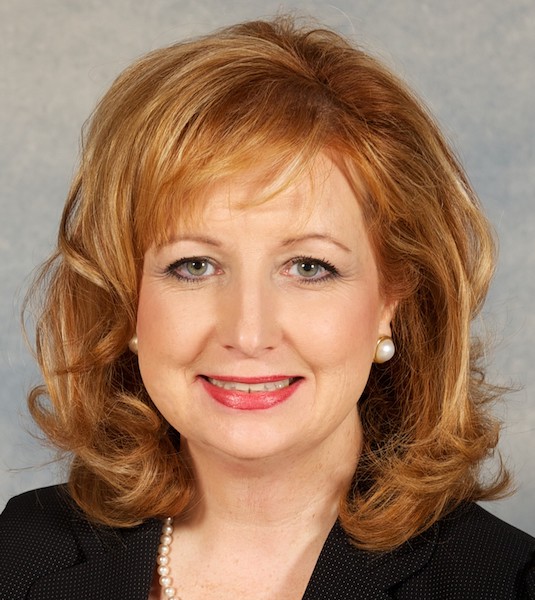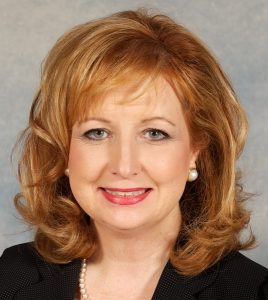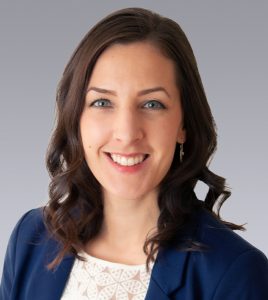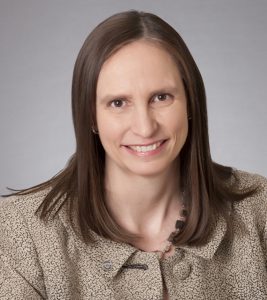
PEMAC’s Lunch and Learn Webcast: Women in Engineering
June 25, 2021
By
Maryam Farag

PEMAC has observed International Women in Engineering Day by hosting a webcast that featured a panel of women in engineering.
The webcast highlighted perspectives from women in engineering and discussed why having more female engineers is a valuable opportunity for organizations, and what changes in organizations and processes will be helpful to move toward Engineers Canada 30 by 30 goal of having at least 30 per cent female engineers by 2030.
Erin MacNeil, asset management operations manager, Nova Scotia Power, was the moderator of the panel. She started by asking the guests to introduce themselves:

Helen Wojcinski.
Photo: PEMAC.
Helen Wojcinski, President, Wojcinski & Associates Ltd. and Chair, Professional Engineers Ontario 30 by 30 Task Force, is a professional engineer and organizational behavioural expert. She operates her own change management consulting practice, and has over 30 years of experience.
Prior to establishing her consulting practice, Wojcinski was a highway infrastructure engineer managing multi-million-dollar projects, culminating as the manager of design for the Ontario Transportation Capital Corporation of the $250 million western extension of the 407 ETR. She served as the Ontario representative on the Engineers Canada’s Equitable Participation in the Profession Committee.

Nicole MacDonald.
Photo: PEMAC.
Nicole MacDonald, Project Manager, Colliers Project Leaders, has worked in environmental consulting prior to joining Colliers, and has completed a bachelor’s and master’s degree in environmental engineering. Her recent experience includes drinking water infrastructure and environmental investigation/remediation.
MacDonald hopes to inspire others, such as Indigenous people, women and youth to enter the STEM field and to create positive change in their communities and in the world. She is a member of Engineers Canada’s Indigenous Advisory Committee, which advises Engineers Canada in its work to increase Indigenous representation and inclusion in the engineering profession.

Margaret Anne Hodges.
Photo: PEMAC.
Margaret Anne Hodges, Senior Project Manager, Technology Division, SaskTel, has had varied roles with several functional groups within engineering over 32 years.
She has served seven years on council for the Association of Professional Engineers and Geoscientists of Saskatchewan and served as President in 2015-16. She was APEGS first 30 by 30 Champion and is now serving on Engineers Canada’s Qualification Board and will assume the Vice Chair role this summer.
MacNeil: What drew you to engineering? And was the gender minority status within the profession a detractor or an attractor for you?
Margaret Anne Hodges:
In the last couple of years of high school, I didn’t really know what I was going to do. My parents said I could be anything I wanted as long as I was a professional, and my mom was a medical doctor my dad was an engineer. I was thinking am I going to go into business. I grew up in Toronto, so between grade 12 and grade 13, that summer, I was here in Regina visiting the family and I was working on this interlocking block project to paving stone project, and all of a sudden, I was like ‘this is fun, this is creative, this is using math and science’ because I had to measure things up, design, and figure out where things are going. And all of a sudden, the light bulb went off on this; I’m going into engineering. Interestingly enough, I went to an all-girls school growing up, from grade two all the way to grade 13. So, to go in and choose something that would normally be perceived as very masculine, you would think might be a turn, but no, not at all, because in the schooling that I had, I had nothing but female role models as math, physics, chemistry teachers, so they prepared us to be strong confident young women, and so I really didn’t think terribly much about that.
Of course, I had great role models, both parents, but I ended up choosing to follow in my dad’s footsteps as opposed to my mom’s, so that’s how I ended up in engineering. And I couldn’t spell to save my life, so I had no choice but to go into stalling with numbers.
MacNeil: Why is gender diversity important in engineering, in particular to this conversation? Why is it important that we encourage more women to join the profession and seek ways to support that?
Helen Wojcinski:
I want to make an important distinction: one of my wonderful engineering women colleagues, a leader in the engineering profession, made a remarkable statement that really stuck with me: women are not a diversity group. Women make up half the population. Half the population is not participating in engineering and solving all the problems that face our society today; climate change, sustainable environment, emerging technologies, artificial intelligence, and I could go on and on. Does it make sense that only about 12 per cent in Ontario right now that have their P. Eng. are women? So, it’s over 80 per cent, meaning 85 or 88 per cent is men. Does that make sense that 88 per cent are men that are sitting at these tables making these kinds of solutions? So, women are not a diversity group; we’re half the population, we’re not tapping into that talent pool and we’re not serving the public. Especially as a licensed profession, we need to represent the public that has entrusted us to safeguard their interests. I think that’s a really important distinction.
Something else that really struck me is often times we’ll say: women, ethnicity, sexual orientation, and religious beliefs or whatever; we’ll put all the diversity components and then we’ll add in women. We never say men and all the other diversity groups, so I think it’s really important that we encourage bringing in half the population, and in bringing in that other half the population we will be bringing in all the diversity that comes with that half of the population and all its richness. We have a real gender imbalance in the profession. if we’re welcoming to women we’re going to go a long way to addressing equity diversity and inclusion, so that to me was a profound takeaway that I got from my colleague.
MacNeil: What barriers have you faced, or conversely, what positive experiences have you had being a female minority in the profession?
Nicole MacDonald:
I suppose I’m fortunate that there’s probably only a few examples of real barriers that I have felt, like they’re probably pretty few and far between and I think so much has changed over the years due to the work that women have put in. For example, I think a lot of the barriers I have faced are more internal ones, but it’s true that they’re known to be more common to women than to men, and it can be a factor of how we’re raised, the environment, our education, and things like that. I think a lot more women are perfectionists; we tend to doubt ourselves a lot more. We minimize our skills and accomplishments like we don’t want to stand out too much, and I struggle with this all the time, but I’m always working in it.
I think these days there are a lot more opportunities out there, and more resources for women or even other minorities that are in underrepresented professions, like engineering. And so, we should be taking those opportunities and running with them right and doing that work. For example, I feel like none of that’s really a negative; it’s a positive, because I read books, I do research, I attend events like this, you talk with other women or you find mentors. And I think all of those things help you work past some of those barriers, whether they’re external or internal, and they make a big difference in all areas of your life, not just in your career. Therefore, I think it really is a positive to face some of these struggles, and you have to become aware of them and then work on them, resulting in really positive outcomes.
An attendee asked: You all had privileged upbringings with parents that were supportive and had professional backgrounds.
How do you encourage young girls that are minorities across Canada into entering this profession? Especially if they have that spark for maths and sciences at a young age, how do we make sure that they keep up with it and that they are able to go into their high school and post-secondary years with that base to get into the profession?
Helen Wojcinski:
My mother was just a homemaker and my dad worked at Ontario Ministry of Transportation, but he wasn’t an engineer. I got the influence just by happenstance in terms of external family members.
I think the numbers really matter. I know that the universities in Ontario are really doing a lot of outreach; there’s OWE, which stands for Ontario Women in Engineering. There are all kinds of initiatives to try to get young girls interested in the maths and sciences, and so they’re making headway, because in Ontario the percentage of women that are entering universities is now up to 40 per cent first-year students, so it’s starting to change and I don’t know their socio-economic background.
I think what really matters is the numbers, having role models, and having women in the profession practicing so that they can see this is a possibility that they can do. We can’t seem to get past these numbers in this profession, as it’s only at 18 per cent. I graduated 1987, and I got my engineering license in 1989, and in 1990 I joined just newly formed Women in Engineering Advisory Committee of Professional Engineers Ontario, and I became its Chair in I think 1993, but that was over 30 years ago and at the time, when I got my P. Eng., only two per cent of women in Ontario had their license. You fast forward to today, which is thirty years later, and it’s only 12 per cent that actually have their license, and that is how slow it is moving.
If we reach 30 per cent by 2030, which is coming up fairly quickly, I’ll be almost 70 years old. And so, why does the 30 per cent matter? it’s a critical mass. There’s research done at the Harvard Business School that 30 per cent is like that tipping point, so if you have 10 people, and there’s only one woman, they feel out of place. With nine men; two women, still out of place, with seven men; three women, they start to feel like “hey, I’m not an outsider”, so that 30 per cent matters.
We’re still only at two out of ten, so I think we’ve stalled for the last five years. We’re not moving that needle and I think that’s their problem. I think there’s just no role models and so they don’t even think about it. According to all our stories, we sort of just stumbled into it. I don’t even think it had anything to do with my upbringing per se, and that’s why I’m so passionate about 30 by 30. I think it really matters that companies step up.
An attendee asked: Can you speak to balancing an engineering career and family: did it hurt or delay your careers or did it make you a better engineer, in light of COVID-19?
Margaret Anne Hodges:
First of all, I have a wonderful husband who is a freelance writer. He was able to do a lot of that early child care type of thing. In fact, he’s the one that heard my daughter’s stories first when she got home from school and I got “How was your day darling? Fine,”. I missed all these types of things, so the point there is the importance of a good balance in the whole relationship; that parents have co-parenting responsibilities, and that makes a big difference.
We’re engineers, and we should understand that the Canadian Standards Association (CSA) has a standard about describing a psychologically healthy and safe workplace, and what I love about this document is it talks about things that are so common sense and that make a difference in a healthy workplace, and they include things that address workload management,
engagement recognition, and a work-life balance type of thing. It has a measure in which you can tell whether or not you’re in a really good work environment and a good company. I would say check on all of these characteristics, as there’s always room for continuous improvement.


